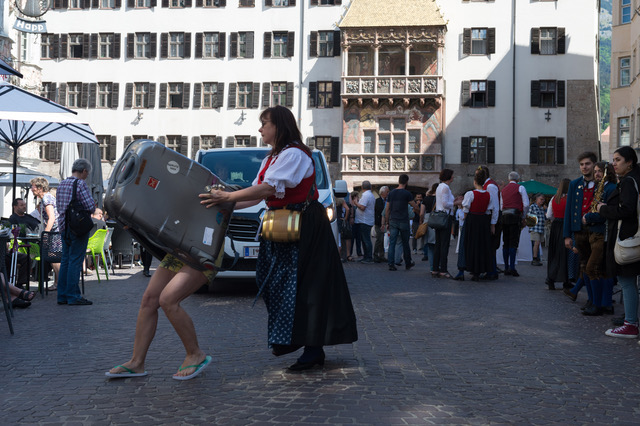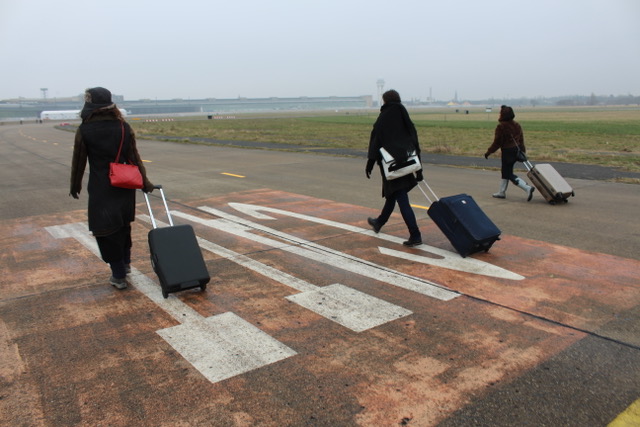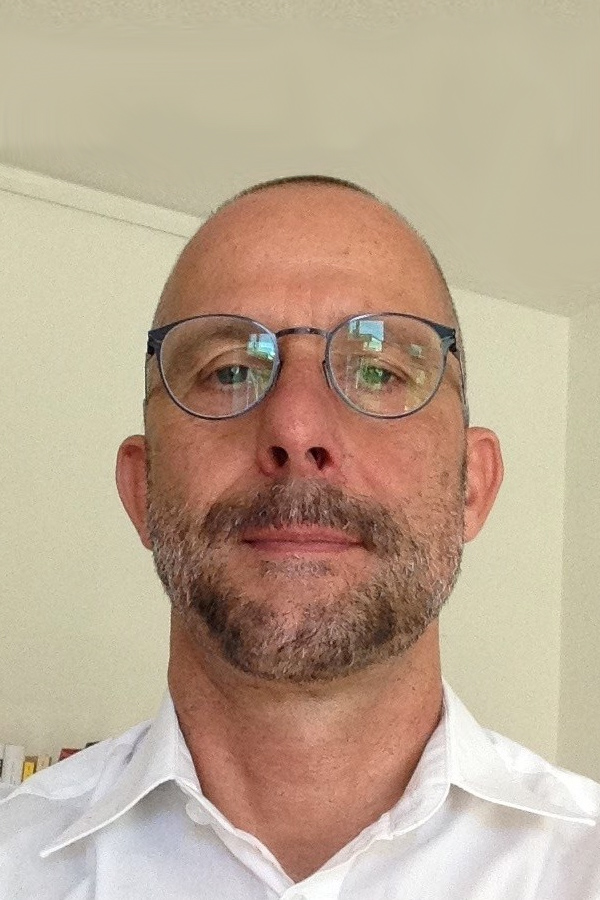Artists from Eastern Europe in Berlin: Tanja Ostojić
This conversation is part of a series of interviews with artists from Eastern Europe who live and work in Berlin. The city has attracted artists from Eastern Europe for a long time: especially during the Cold War and into the 1990s, its peculiar geo-political situation gave it a unique ambience that attracted artists from all over the world, but especially from the East. How do these artists experience the city today? How do they look back on the hopes and expectations with which they once arrived? Have they settled for good, or are they considering moving elsewhere? Do their Eastern European origins still matter for their art making?
Sven Spieker: Under what circumstances did you come to Berlin?
Tanja Ostojić: I moved to Germany in Spring 2002 from Belgrade, somehow by chance. At the time I was pursuing my project Looking for a Husband with EU Passport. I had married someone in Düsseldorf in West Germany. After about a year and a half of being based there, I decided to move away from that town, and I thought about where I could go. I chose Berlin because I was already engaged in a long-term project entitled Integration Project. I was also working on a documentary film about a deportation jail in Berlin Köpenick. So I thought that would be a good reason to move to Berlin, where I had already collaborated with Haus der Kulturen der Welt (HKW).
SS: Did you feel your work would be better understood in Berlin than elsewhere?
TO: I thought Berlin would be more suitable as a base for me, even though my art is better known in Vienna than in Berlin, where I have never lived before either. And I think this geographical interest and historical relationship between, for example, Vienna and the former Yugoslavia is not really present between Berlin and the former Yugoslavia. In Berlin, people seem to be fairly uninformed about Yu-goslav history, and they have strange perspectives on what sort of political and economic system—what kind of culture—we were growing there.

Tanja Ostojić, “Misplaced Women? and The Tourist Suitcase” (May 12, 2018), 60 min. performance at the Goldenes Dahl, Altstadt, Innsbruck. Art in Public Space Tyrol, Austria. Photo: Daniel Jarosch. Courtesy the artist.
SS: More so than would be the case in Austria?
TO: Yes, since Austria is much closer to the former Yugoslavia and there are many more people from the former Yugoslavia there, they are also better able to relate to my work. A large part of the Yugoslav migrant workers from the 1960s went to Austria. In Berlin on the other hand, there are a lot of young and middle-aged cultural workers from the former Yugoslav republics.
SS: How do you feel as an artist from the former Yugoslavia in Berlin? Does your background influence the reception of your work here? And does the notion of being “Eastern Europe” play a role in the way you see yourself?
TO: In 15 years I have never had a solo show in Berlin except in small artist-run spaces, and of course that’s problematic. Perhaps the reason is that my work is overly political, overly feminist for Berlin in the past fifteen years, or maybe that it’s missing an interest in certain geographies. I relate my work to the territories of the former Yugoslavia, not Eastern Europe, because I can only relate to Yugoslav history and the Nonaligned Movement, not Eastern European history per se. These are quite different.
SS: How has your perspective on Berlin evolved over the years?
TO: I appreciate that I live here, and I finally feel at home. It is a city that has over 10,000 artists, and over 10,000 homeless people as well. I guess we cannot all be represented here. The art scene in Berlin has changed over these past fifteen years. Quite a number of institutions I collaborated with have disappeared, including the InTRANSIT Festival at HKW. It was a strong festival of performance art that was interested in political content. Many institutions have also changed a great deal, including HKW. But what has truly changed a lot in Berlin is how the art scene functions.
SS: What do you mean by this?
TO: Nowadays it seems the only way to be represented in the major art institutions is through the galleries. And since the institutions have money, there has been a lot of public investment in them in recent years.
SS: You mentioned the political nature of your work, and how that might contribute towards your relative invisibility in Berlin. Could you say more about this?
TO: I’ll give you an example. Last year I was part of a team whose task was to investigate and advise the German government on the consequences, in the field of culture, of the international free trade agreements TTIP and CETA, particularly with regard to the Berlin art scene. The foundation that was supposed to organize the brain-storming session informed us that the government had suddenly pulled out at the last minute, despite the fact that hundreds of activists had already invested a lot of time in this research.
SS: How has the economic situation in Berlin changed in recent years?
TO: There is a lot of gentrification. The reason that so many artists came here is because Berlin was so affordable, yet most of them did not really manage to keep the spaces they rented. I live in the Mitte district, and I can remember in my neighborhood there were so many artist-run spaces. They have all disappeared. This happened extremely fast when compared to places like Hamburg where people really stay engaged with their neighborhoods, both for social and cultural reasons. I wonder occasionally where next? Do people now move to Warsaw and Belgrade?
SS: Isn’t this part of the neoliberal mindset? You sort of navigate locations without becoming rooted in any of them because soon you need to move again. But what about Belgrade? How does the city present itself from the perspective of Berlin?
TO: When I went to study for my second master’s degree in France in 1998 I was able to look at the situation in Belgrade from another perspective. That was very good. Of course most people who are there don’t have the privilege of having such an outside perspective. I’m quite aware of my privilege. The reason I could produce my Lexicon of Tanjas Ostojić (2011–17) project in four museums in the former Yugoslavia was because I went there as a “German artist” with the generous support of the Goethe-Institute Belgrade. In the post-Yugoslav spaces, the production possibilities for artists—in terms of institutional funding on a national level—is terrible. Except for a couple of privileged ones that are close to the government, most work without budgets, which makes it extremely difficult to exist there. The museum in Banja Luka (the Republic of Srpska, in Bosnia and Herzegovina), for instance, isn’t open on weekends because they have to rent out the space for weddings. So, artists often produce their own shows, or they get help from their galleries in Germany. Of course, it’s a difficult situation also in terms of what goes on there politically. You don’t have the freedom to do much. Unfortunately, the decision as to who holds power in Belgrade is not determined by competence.
SS: You mentioned that you showed in the former Yugoslavia as a German artist. Could you comment on that?
TO: German cultural politics are clever. If the Institut für Auslandsbeziehungen (IFA) or the Goethe Institute do a show in a Balkan country, they will tend to invite artists from that country who live in Germany, such as myself. Of course that’s not always the case…
SS: In the way you think about yourself, is it important that you define yourself as, say, a German artist, or as a Serbian artist based in Germany? Does it matter?
TO: It does, because it relates to certain positions, possibilities, and privileges. Just look at the freedom of movement in the world today: what matters is who has a passport and who does not. Then you have residency permits and all kinds of other things. Also when you apply for funding as an artist, this is what makes the difference. We definitely don’t live in a post-national time. Every time I go to the UK I have to apply for a visa, even for a stay of two weeks.
SS: That’s exactly what I was getting at. I’m curious about this supposed post-national, global art world that nevertheless prizes national attachments a great deal. So on the one hand, as an artist, you’re expected to operate completely globally and be present everywhere, and yet a prize is put on your being, say, a Yugoslav artist, an Iranian artist, an artist from Africa. Somehow this market that supposedly operates under conditions that are perfectly global—or maybe because of this—puts this extra prize on the category of the national, without which you can’t be successful. You have to be from somewhere, and you have to represent that somewhere, like you mentioned, sometimes even in the most clichéd ways.
TO: It is true. It depends on how you are tagged, or rated, or which system you are a part of. People tend to accept certain labels because of certain pressures. Speaking for myself, I’m not really a part of the art market, nor of the trendy art scene. It is also unpopular to come from Serbia. Or perhaps is it a matter of my not being ready to make certain compromises in terms of my own art production. Because I work in different fields, I’ve managed so far to sustain my economy without depending on a market. This has involved a lot of precarity, but it was somehow possible so far, so let’s see how it will turn out.
SS: Could you say a few words about your interest, as an artist, in passports, and refugees, and your work with migration – an issue that has been important in Berlin as well. I don’t know if you are still actively working with these issues?
TO: I worked for over twenty years with the issue of migration, but when it really came into the public focus, I decided to stop working on this. For example, for a couple of years I tried to work on a documentary about 300 migrants who, in 2011, went on a forty-four day hunger strike in Thessaloniki and Athens. When the economic and political situation in Greece dramatically changed for the worse, I decided to stop working on this because I thought it would be difficult to proceed while the political situation was getting more complex, and without any funding at all.
SS: Since 2009 you have been running the ongoing project Misplaced Women? Can you tell me more about it?
TO: Misplaced Women? is an ongoing series of single, group, and delegated performances in migration-specific public spaces. It also includes performance workshops, and a collection of signs, reflections, and writings from a large number of contributors with diverse life experiences. The project concerns different aspects of displacement and privilege, particularly concerning women, and a range of public spaces globally. In some of my earlier work, such as Strategies of Success / Curator Series (2001-03), I researched relationships of gender, power, and sexuality in the art system. When it comes to migration, this task is not so easy, as one is working with people who are in a very difficult situation from one’s own. I’m always trying to create an understanding of the perspective of those who are outside; I do not want to create an image of them. One of the recent workshops related to Misplaced Women? took place in Berlin in January 2018, hosted by Kunsthalle Weißensee.(Part of the archives of the project were shown, in 2016, as part of the show Feminism is Politics! at Pratt Manhattan Gallery in New York, and in September 2018 at the Beautiful Troubles exhibition at Art-Lab, Berlin.)

Tanja Ostojić, “Misplaced Women?” (2009-19). From the “Misplaced Women?” Workshop in the Public Space, hosted by Kunsthalle am Hamburger Platz, Berlin (January 2018). Performance Interventions at the Templehof Airport Field. With the participation of: Tanja Ostojić, Rhea Ramjohnand Katja Vaghiin Berlin, Germany. Photo: Alice Minervini. Courtesy: Tanja Ostojić
SS: Another recent project of yours, Lexicon, looks at the migration and life experiences of thirty of your namesakes—all of them called “Tanja Ostojić”, but not related to you—moving through, and out of, the former Yugoslavia between the early 1990s to now.
TO: Yes, our migrations were motivated by postwar resettlement, a search for educational opportunities, a better economy, or marriage. Again, I tried to put myself in the position of my interlocutors, not just in the privileged position of the interviewer. I worked closely with each of them and created long-term friendships and a creative community.
SS: You do not want to be an observer…
TO: The point is that I do not want to take over the refugees’ perspective. Additionally, it’s very important for me to share any economic gain from my works with whoever contributed to their creation. In the Lexicon project, I shared my authorship and ownership: participants could not only decide which questions would be asked as part of our standardized “Tanjas Ostojić Interviews” but they could also decide at any point to pull out of the project.
SS: Is Berlin included in any of these projects?
TO: The Lexicon project hosted several events in Berlin, including a talk show in 2013 and a book launch in 2018, both at HKW. I am also very pleased that this year I am taking part in two art book fairs as an invited independent artist-exhibitor: Miss Read at HKW, and Friends with Books at Hamburger Bahnhof, both in Berlin. This is an important step towards gaining visibility for my publications and long-term projects.
SS: Thank you!
Berlin, June 2017 (Transcriptionby Gabriel Wilson)
Other interviews in this series:
Nika Radić




